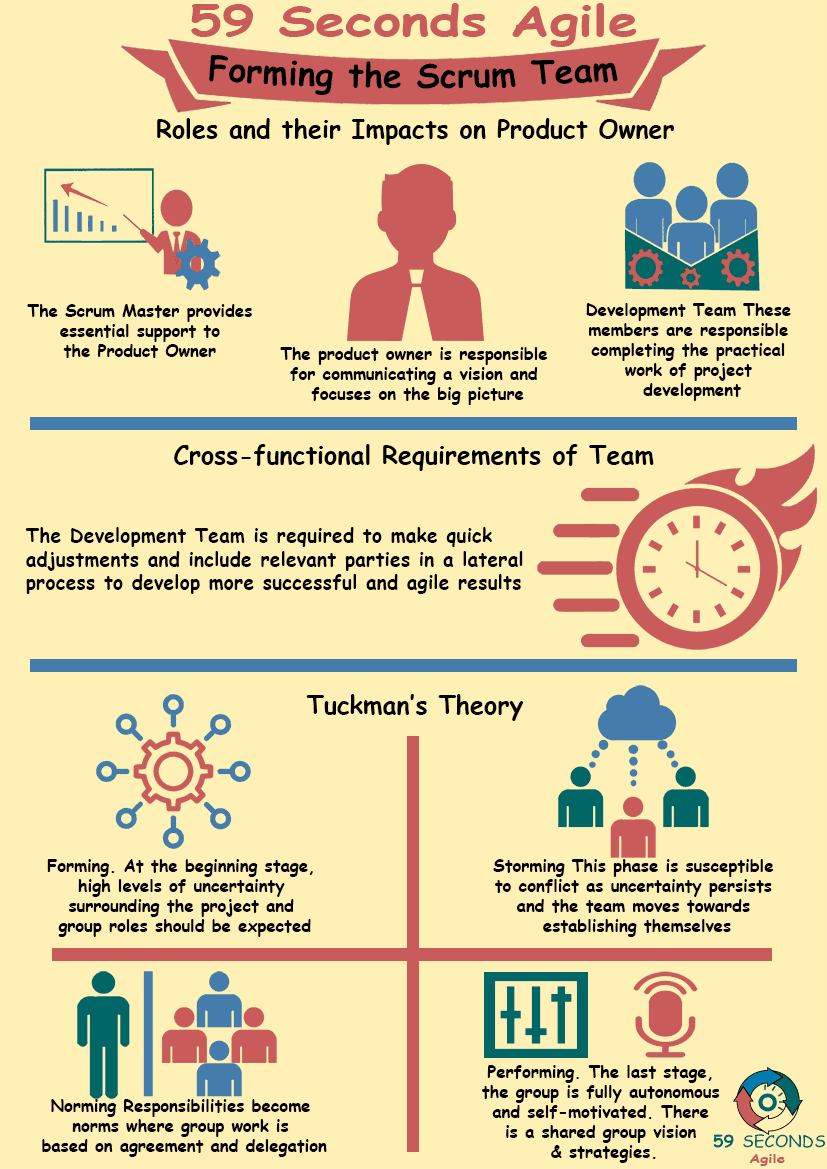
Forming The Scrum Team For Product Owners – Part 2
Tuckman’s Theory and Product Owner
In 1965, psychologist Bruce W. Tuckman proposed a theory of group formation; which includes four stages:
1) forming,
2) storming,
3) norming, and
4) performing.

Tuckman explains a group leader’s role often transforms from extremely hands-on, to coach, facilitator/enabler, and finally to delegator. Through understanding Tuckman’s theory of group dynamics, the role of product owner can adapt and provide support in a form most effective and in line with his/her scrum team when issues arise. The four stages and role of product owner within them will be discussed below.
Tuckman’s Stages
Forming. At the beginning stage, high levels of uncertainty surrounding the project and group roles should be expected. This means that there is a high level of reliance on and direction to be given by the product owner. Within this phase, the product owner should take a hands-on and guide role.
Our Favourite Agile Books
We found these books great for finding out more information on Agile Scrum:
Storming. At the second stage, the team is beginning to move towards autonomy but requires support and nudges from the product owner. This phase is susceptible to conflict as uncertainty persists and the team moves towards establishing themselves. The role of the product owner should shift from directing to coaching.
Norming. At the third stage, individual and group roles become clear. Responsibilities become norms where group work is based on agreement and delegation. There is a shared sense of leadership and democratization, thus the product owner becomes a facilitator or enabler.
Performing. At the last stage, the group is fully autonomous and self-motivated. There are a shared group vision and strategies with no need for assisting or instruction from the product owner; who now delegates and oversees the product or processes when necessary.

